PROGRAM AT A GLANCE

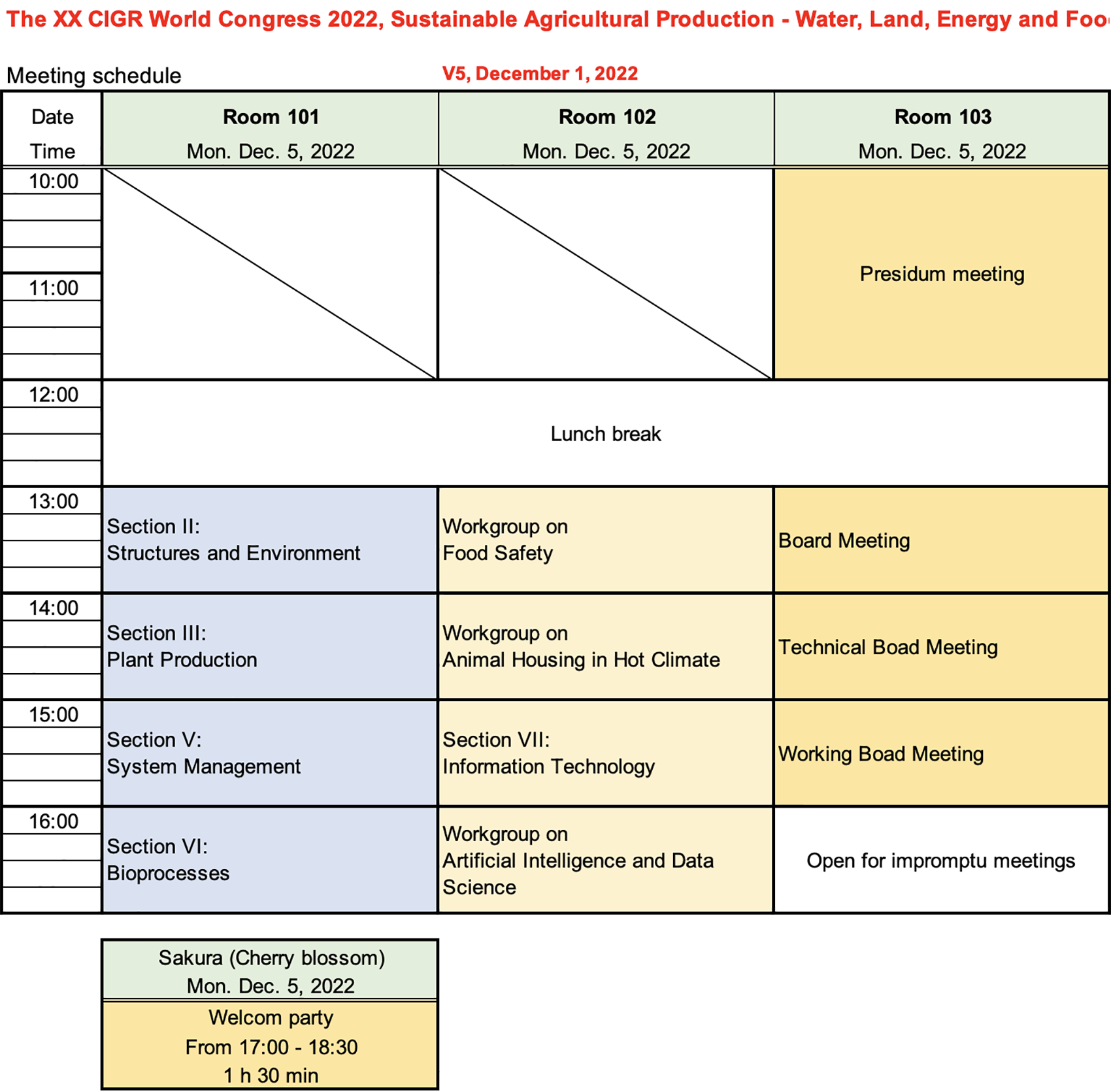
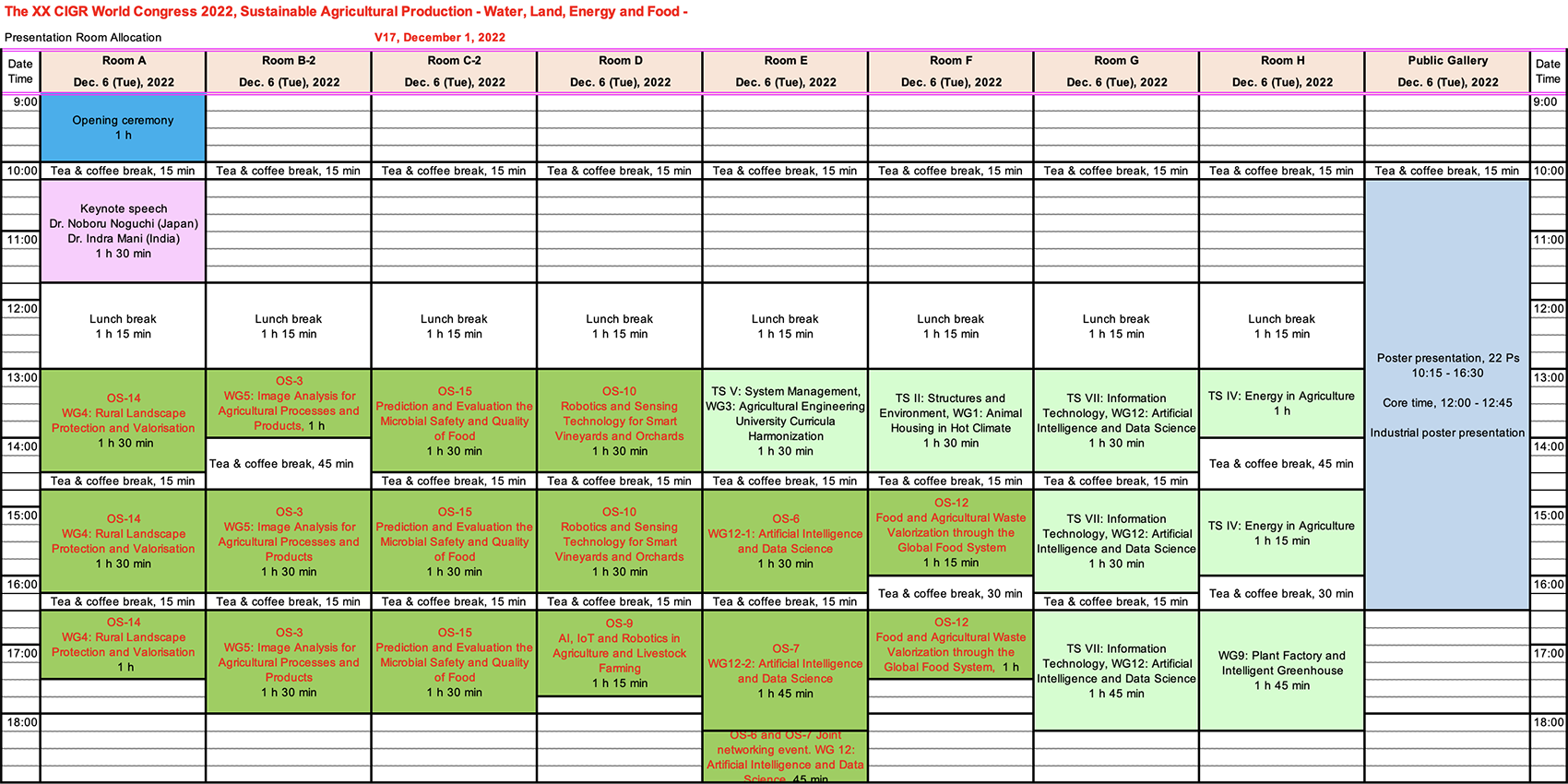
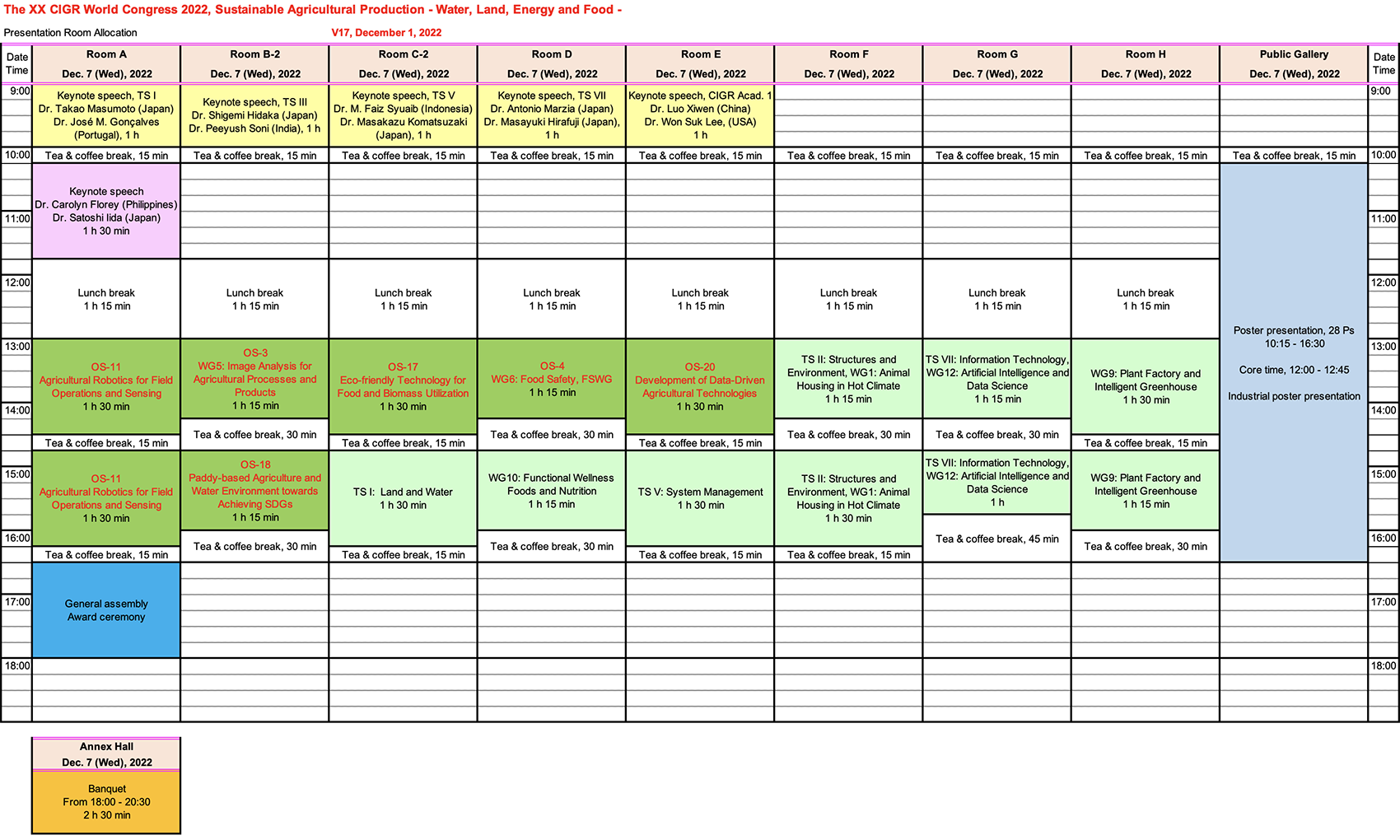
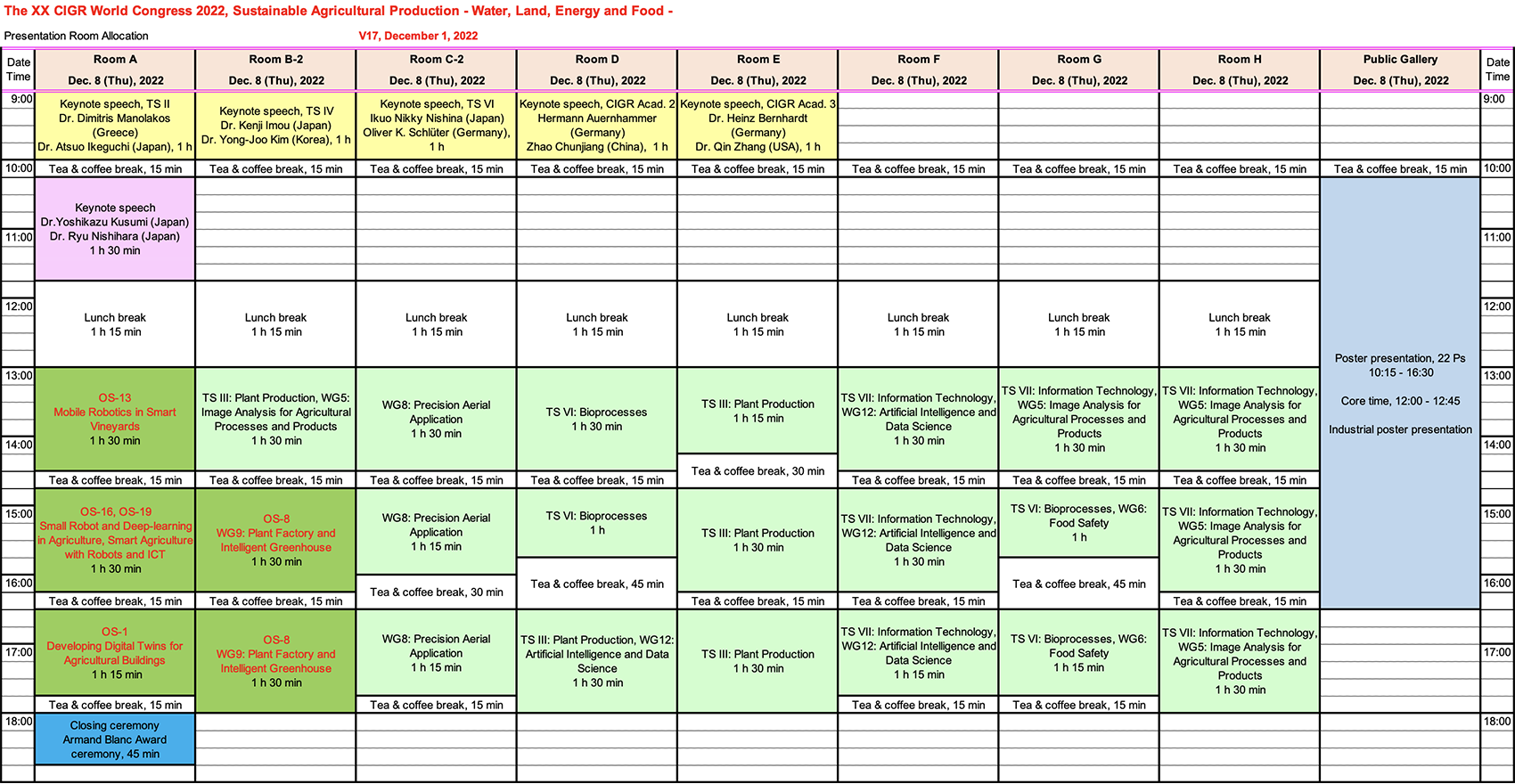






Vice dean and Professor, Research Faculty of Agriculture, Hokkaido University, Japan
Deputy Program Director, Cross-ministerial Strategic Innovation Promotion Program (SIP) "Technologies for smart bio-industry and agriculture", Bureau of Science, Technology and Innovation, Cabinet Office, Government of Japan
B.S. Agricultural Engineering, Hokkaido University, 1985.
M.S. Agricultural Engineering, Hokkaido University, 1987.
Ph.D. Agricultural Engineering, Hokkaido University, 1990.
<University>
Assistant Professor College of Agriculture, Hokkaido University, 1990.
Associate Professor Research Faculty of Agriculture, Hokkaido University, 1997.
Professor Research Faculty of Agriculture, Hokkaido University, 2004
<National academy>
<Government agency>
<Overseas organization>
Looking globally, it is estimated that the world population will reach 9.8 billion in 2050 and that the demand for food will increase by 60% from the current levels, which will cause an imbalance between the supply and demand of food in the world, resulting in food shortages in the future. Furthermore, the labor shortage that Japanese agriculture is facing is common in both developed and emerging countries. The number of agricultural workers is decreasing, especially skilled human resources, and robotization is in high demand internationally. In recent years, research on smart agriculture utilizing 5th generation mobile networks (5G) and artificial intelligence (AI) has also been conducted. One example is a robot that can apply fertilizer precisely based on crop growth using AI and high-resolution images, and can detect and respond to disease and insect damage at a very early stage. It is an intelligent system that uses 5G for data transmission and analyses data in the edge cloud. In addition, research on autonomous drones that not only spray pesticides but also collect growth information is also on the international research agenda. The paper addresses the forefront of smart agriculture using ICT and robots for ensuring sustainable society.
Keywords: smart agriculture, agricultural robot, artificial intelligence, IoT, bigdata, society 5.0

President ISAE. Head, Division of Agricultural Engineering ICAR-Indian Agricultural Research Institute, India
The emerging consensus is that the world likely will exceed 9 billion people by 2050 requiring 70%, 80% and 55%, more food, water and energy, respectively. Managing Food-Water- Energy (FWE) nexus has become a matter of global concern due to environmental security under changing climate. Currently, it is estimated that 26 million diesel and electric pumps run on Indian farms, making them the dominant technology offerings today. However, grid-connected pumps that rely on electricity face the same challenge that any other load connected to India’s central grid faces: frequent outages. In addition, diesel-based pumps burden farmers with high recurring fuel expenditures. The lack of access to dependable pumping solutions hampers livelihood improvements throughout rural India. India uses more than 4 billion liters of diesel (13% of total diesel consumption in India) and around 85 million tons of coal per annum (19% of total coal consumption in India) to support water pumping for irrigation. If 50% of these diesel pumps were replaced with solar PV pump sets, diesel consumption could be reduced by about 225 million liters/year (7.5% of total diesel consumption in India). Similarly, groundwater is one of the most important water sources in India accounting for 63% of all irrigation water and over 80% of the rural and urban domestic water supplies. As per IWMI report, adopting micro-irrigation techniques can save roughly 20% of the groundwater used annually on irrigation in India. A key challenge is to convince farmers to adopt such techniques. In 2025, the total demand for water in India is projected to be 886 billion cubic metre, and the total electricity demand 4,18,277 million kWh. Adoption of micro-irrigation is increasing at 1.22% per annum. If this growth rate continues, about 8.8 million hectares will be under micro-irrigation in 2025, and 24 billion cubic metre of water and 3,598 MkWh of electricity will be saved annually. Sustainable Food-energy-water nexus-potential options in Indian context for future will be Smart technologies (agro-hydrological interventions): Improved irrigation techniques (Laser levelling, micro-irrigation, SRI, increasing pump efficiency), Reduction in energy used in pumping, (utilization of solar energy), Minimum tillage system, Genetic improvement in crops for heat and drought tolerance.
Keywords: smart technologies, micro-irrigation, energy nexus , Minimum tillage system, drought tolerance
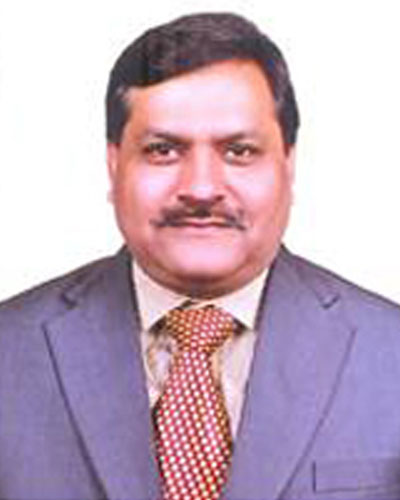
Senior Director, Technology for Development, Mercy Corps, Philippines
Digital technologies range from ‘low-tech’ tools such as mobile phones and computers to more ‘high-tech’ solutions such as blockchain, Internet of Things (IoT), and artificial intelligence. Digital technologies can help smallholder farmers increase their yields and incomes if they are effectively targeted to facilitate agriculture as a ‘pathway out of poverty’. For digital agriculture to deliver on its promise, it is critical not only to design digital agriculture interventions that consider the target populations’ needs, constraints, and appropriateness, but also to ensure that digital technologies do not exacerbate social and economic inequalities. Cognizance of these risks is essential if practitioners are to ensure that digital agriculture fulfils its potential and makes significant contributions to the Sustainable Development Goals (SDGs). We use the example of a digital agriculture decision support tool, Rice Crop Manager (RCM), to illustrate the challenges of designing, targeting, and scaling digital tools to support rural development.
Keywords: digital agriculture, equity, poverty, Rice Crop Manager, gender

Senior Technical Advisor, Kubota Corporation, Japan
| March, 2018 | Senior Technical Advisor of Kubota Corporation (to present) |
|---|---|
| April, 2016 | Director and Senior Managing Executive Officer of Kubota Corporation |
| April, 2015 | Senior Managing Executive Officer of Kubota Corporation |
| April, 2014 | General Manager of Research & Development Headquarters |
| April,2012 | General Manager of Farm & Utility Machinery Division, General Manager of Farm and Utility Machinery International Operation |
| April, 2011 | Managing Executive Officer of Kubota Corporation |
| January, 2011 | General Manager of International Operations Headquarters in Farm & Industrial Machinery Consolidated Division |
| June, 2009 | Executive Officer of Kubota Corporation |
| April, 2009 | President of Kubota Tractor Corporation |
| June,2009 | Director of Kubota Corporation |
| April, 2004 | President of Kubota Europe S.A.S. |
| April, 2003 | General Manager of Construction Machinery Division |
| December, 1999 | General Manager of Construction Machinery Engineering Dept. |
| June, 1999 | Deputy General Manager of Tractor Engineering Dept. |
| April, 1980 | Joined Kubota Corporation |
Japanese agriculture has reached a significant turning point due to numerous factors, including a considerable decline in the number of farmers stemming from the country’s aging population. In these circumstances, it is necessary to change Japanese agriculture into an attractive and profitable business for the upcoming generations of professional farmers to ensure a robust, sustainable agricultural field. As an approach to foster next-generation agriculture, Kubota has been engaged in the development of smart agriculture technology using ICT and IoT. This session will cover the status of various technology developments, such as 1) a Japanese-style precision-farming system connected via smart farm machinery (the Kubota Smart Agriculture System: KSAS) and 2) ultra-labor-saving technology via automation and unmanned operation of farm machinery, as solutions for the challenges that the farmers who support agriculture face. Other points will include the challenges that go into popularizing smart agriculture in Japan.
Kubota aims to expand smart agriculture not only in rice farming but also to the farming of various crops, such as vegetables, and provide total solutions that benefit the entire food value chain. As contributing to global carbon-neutral policies becomes increasingly important, the session will also explain how Kubota plans to orient its technological development to respond to such issues.
Keywords: Precision farming, Rice farming, Smart agriculture, KSAS, KUBOTA Smart Agri System, Autonomous, Agricultural machinery
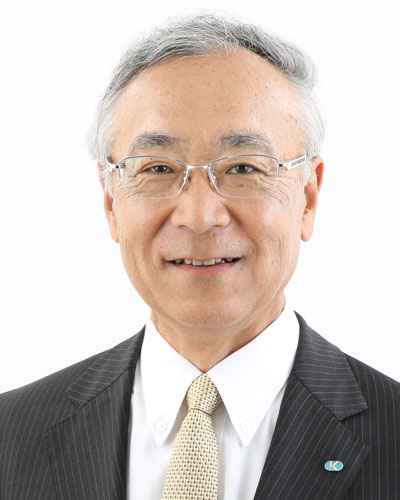
Director, Strategic Business Creation Team, Research and Development Planning Department, NIPPON TELEGRAPH AND TELEPHONE CORPORATION (NTT), Japan
| 2014 - Current | Director, Research and Development Planning Department, Food and Agriculture Business Creation Team, NIPPON TELEGRAPH AND TELEPHONE CORPORATION (NTT), Japan |
|---|---|
| 2008 - 2013 | Manager, Global Business Division, NTT Communications |
| 1999 - 2007 | Deputy manager, Corporate Planning Department, NTT Communications |
| 1995 - 1999 | Facility Planning Department, NTT |
Nippon Telegraph and Telephone Corporation (NTT) has been involved in the research and advancement of communications technology, contributing to the digitization of numerous fields, including medicine, transportation, and agriculture. Currently, NTT is involved in research to realize a new information and communications infrastructure, "IOWN," that will transform the current information and communications systems and transcend the drawbacks of current ICT technologies. IOWN is a network and information processing infrastructure, including terminals, that can provide high-speed, large-capacity communications and substantial computing resources using innovative technologies centered on optics. This presentation will offer an overview of IOWN technology, which is currently being investigated using agriculture as a case study, and the future agriculture that IOWN realization will provide.
Keywords: Network, Agricultural labor saving, Agricultural automation, DX (Digital Transformation), IOWN
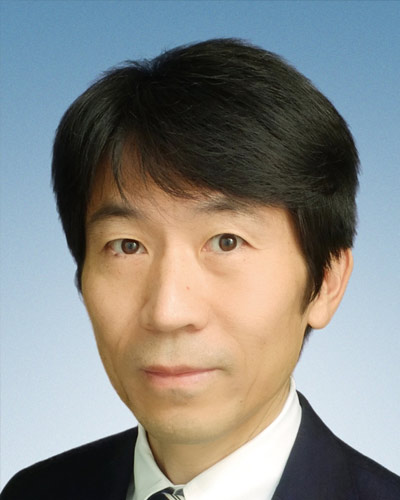
Specialist, PwC Consulting LLC, Japan
| 2022 - Current | Specialist, PwC Consulting LLC |
|---|---|
| 2012 - 2022 | Director, specializing in quantitative analysis including IoT/AI/Data analytics, PricewaterhouseCoopers Aarata LLP |
| 2002 - 2012 | Consultant for Financial Industry, PricewaterhouseCoopers Aarata LLP |
| 2001 - 2002 | Actuarial Associate, PwC Advisory LLC |
| 2000 - 2001 | New Graduate, PwC Consulting LLC |
As technology advances, the potential of agriculture can be harnessed in many directions. For example, remote harvesting will become possible through the use of human extension technology and robots. This remote harvesting will enable people who have difficulty leaving their homes to participate in society. As shown in this example, by combining agriculture and technology, agriculture can contribute to building a sustainable society in a new way. This presentation will provide a new perspective on new community development using agriculture and technology, looking at the entire range of technologies that can be applied not only to the production site but also to the smart food chain as a whole.
Keywords: smart agriculture city, sustainability, technology and robots in agriculture.

Professor, Chair of the Department of Agribusiness, Faculty of Bioresource Sciences, Akita Prefectural University, Japan
Dr. Takao Masumoto is Chair of the Department of Agribusiness and Professor, Faculty of Bioresource Science, Akita Prefectural University. He has 35 years of research experience related to hydrology and water resources in the Monsoon Asia region. His research interests include land use change & hydrology, systems analysis of regional drainage facilities, multi-functionalities (flood prevention, water resources fostering, etc.) of eco-systems, modeling among water circulation, floods & anthropogenic activities, water & foods, the interaction of agricultural water use & floods, that of groundwater & surface water, and so forth. Recent work includes the impact assessment of extremes (droughts and floods) on water/land resources, adaptation measures against climate change, water footprint & agricultural water use, and so on. He worked at the Mekong River Commission Secretariat as Senior Advisor (Hydrology) for 2 yrs. (from 1999 through 2001). He received several rewards: Science Encouragement, Science, Sawada, Excellent Technology/Paper Awards from JSIDRE, International Award from PAWEES, Niigata International Food Award (Sano Touzaburo Special Prize), Japan Prize of Agricultural Science, and The Yomiuri Prize of Agricultural Science. He has served as Editor-in-Chief of Paddy & Water Env., Editors of ICID’s Irrigation & Drainage, and JARQ. He was appointed as Review Editor for a Special Report (SREX) by IPCC. He obtained Ph.D. in agricultural science from Kyoto University, Japan and he experienced two visits to the University of Wisconsin-Madison. He has over 150 publications in both popular and refereed journals.
| From | To | Institution | Degrees |
|---|---|---|---|
| Apr 1977 | Mar 1981 | Kyoto University | BS/Agricultural Engineering (Irrigation & Drainage) |
| Apr 1981 | Mar 1983 | Graduate School, Kyoto University | MS/Agricultural Engineering (Applied Hydrology) |
| Sep 1982 | Jun 1983 | University of Wisconsin-Madison, USA | Special Student/Agricultural Engineering (Soil && Water) |
| Aug 1998 | Nov 1998 | University of Wisconsin-Madison, USA | Visiting Scholar/Civil and Envir. Engr. (Hydrology & Water Res.) |
| Qualification | Year |
|---|---|
| Doctor of Agricultural Science, Kyoto University | 1993 |
| 1983-1988 | Research Associate, Disaster Prevention Research Institute, Kyoto University |
|---|---|
| 1988-1992 | Researcher, Hokuriku National Agricultural Experiment Station, Ministry of Agriculture, Forestry and Fisheries (MAFF) |
| 1992-1995 | Senior Researcher, Hokuriku National Agricultural Experiment Station, MAFF |
| 1995-1999 | Senior Researcher, National Research Institute of Agricultural Engineering (NRIAE), MAFF |
| 1998-1998 | Visiting Researcher, Department of Civil and Environmental Engineering, University of Wisconsin-Madison, USA |
| 1999-2001 | Senior Advisor (Hydrology), Mekong River Commission Secretariat (MRCS) |
| 2001-2006 | Head, Lab. of Hydrology and Water Resources, National Institute for Rural Engineering (NIRE) |
| 2006-2008 | Head, Lab. of Hydrology and Water Resources, National Institute for Rural Engineering (NIRE), National Agriculture and Food Research Organization (NARO) |
| 2008-2011 | Team Leader, Research Team for Global Warming and Environment, & Head, Laboratory of Hydrology and Water Resources, NIRE, NARO |
| 2010-2018 | Professor, Graduate School of Life and Environmental Science (Cooperative System), University of Tsukuba |
| 2011-2013 | Chief Researcher, Group of Water Resources Engineering, Department of Renewable Resources Engineering, and Group of Hydrology & Water Resources Management, Department of Hydraulic Engineering, NIRE, NARO |
| 2013-2016 | Director, Renewable Resources Engineering Division, NIRE, NARO |
| 2016-2018 | Director, Division of Regional Resources Engineering, Institute for Rural Engineering, NARO (NIRE) |
| 2018-Present | Professor, Lab. of Regional and Environmental Hydrology, Department of Agribusiness, Faculty of Bioresource Science, Akita Prefectural University |
| 2021-Present | Chair, Department of Agribusiness, Faculty of Bioresource Science, Akita Prefectural University & Professor, Lab. of Regional and Environmental Hydrology |
| 1996 | Science Encouragement Award on "Optimal and regional drainage planning in low-lying areas" by the Japanese Society of Irrigation, Drainage and Reclamation Engineering (JSIDRE) |
|---|---|
| 2005 | Best Poster Award at the 18th Annual Conference of Japanese Society of Hydrology and Water Resources, Tsukuba, August 2005. "Pham T., Hai, T. Masumoto and K. Shimizu: Simulation of Inundation Processes in Low-lying Floodplains by a 2D-FEM Model" |
| 2010 | Appointment as a Review Editor of Chapter 6, Managing the Risk from Climate Extremes at the National Level, of the Intergovernmental Panel on Climate Change (IPCC) Special Report on "Managing the Risks of Extreme Events and Disasters to Disasters to Advance Climate Change Adaptation (SREX)" |
| 2010 | Science Award on "A Series of Research on Evaluation of Flood Prevention Function of Paddies in Climate Change" by the Japanese Society of Irrigation, Drainage and Rural Engineering (JSIDRE) |
| 2011 | Sawada Award on “Development of a Distributed Water Circulation Model Incorporating Agricultural Water Use and its International Dissemination” by the Japanese Society of Irrigation, Drainage and Rural Engineering (JSIDRE) |
| 2012 | Excellent Technology Award on "Nagai, K., M. Watanabe, A. Akihiko, T. Masumoto and Y. Yoshida: Proposal of Basin-wide Irrigation Planning in Extremely Data Scarce Areas" by the Japanese Society of Irrigation, Drainage and Rural Engineering (JSIDRE) |
| 2012 | PAWEES International Award by The International Society of Paddy and Water Environment Engineering (PAWEES) on "Development of a Distributed Water Circulation Model Incorporating Agricultural Water Use and its International Dissemination as an Adaptive Technology for Climate Change" |
| 2014 | Excellent Paper Award on "Kudo, R., T. Masumoto, N. Horikawa, T. Yoshida: Assessment of Combined Impact of Climate Change and Water Resources Development on Hydrological Cycle in the Nam Ngum River Basin" by the Japanese Society of Irrigation, Drainage and Rural Engineering (JSIDRE) |
| 2016 | Niigata International Food Award (Sano Touzaburo Special Prize) by Niigata International Food Award Foundation on "Modeling and systematic practices of sustainable agricultural water use in paddies based on regional climate, topography, environments and customaries, and its international dissemination" |
| 2018 | JAICABE Award 2018 on "Study on Basin-scale Modeling of Agricultural Water Use and Natural, Anthropogenic Changes of Water Circulation" by Japan Association of International Commission of Agricultural and Biosystems Engineering (JAICABE) |
| 2020 | Japan Prize of Agricultural Science, and The Yomiuri Prize of Agricultural Science on "Modeling and Visualization of Basin-wide Water Circulation in Monsoon Asia and its Research Expansion to Climate Change Challenges" by Association of Japanese Agricultural Scientific Societies and The Yomiuri Shimbun |
My research group has developed numerical models of distributed water circulation and agricultural production, which incorporate agricultural hydrology and water-use technologies, to support the development and management of basinwide water resources in the monsoon area of Asia. Our success in modeling the complexities of human water use and water management in this region, where paddies are the dominant agricultural land use, has led to the development of a distributed water circulation model incorporating agricultural water use. This model has made possible innovative visualizations of water circulation, which are useful for assessing and predicting how extreme weather events caused by climate change will impact agricultural water use and drainage in low-lying areas; it has also led to proposals of “basinwide irrigation methods” that are based on sparse datasets of basic information such as rainfall and stream discharges. In addition, given the rising probability of abnormally heavy rainfall events in future years, we have developed risk assessment methods related to drainage and inundation in low-lying areas dominated by paddy agriculture that make use of uncertainty evaluations. Whereas previous methods to evaluate the impacts of flood inundation on rice production were limited to estimating the extent of inundated regions and sometimes measuring damaged areas, our method quantifies the damage to rice production in terms of value on the basis of the rice growing stage and inundation depths. Our method has attracted strong interest from agricultural insurers and agri-business. Our research outcomes have been well received, resulting in managing the risks of extreme events.
Keywords: DWCM-AgWU, Extreme Events, Water Footprint
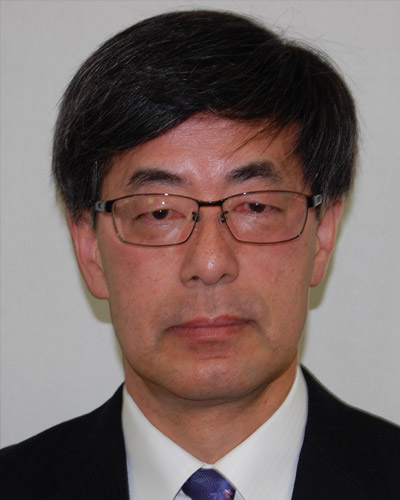
Polytechnic Institute of Coimbra, and Linking Landscape, Environment, Agriculture and Food - LEAF, Portugal
José Manuel Gonçalves is PhD in Agricultural Engineering by the Institute of Agronomy of Lisbon University. He is currently associate professor with habilitation at College of Agriculture of Polytechnic Institute of Coimbra, Portugal (IPC-ESAC, [http://www.esac.pt)]www.esac.pt), and researcher of Linking Landscape, Environment, Agriculture and Food Research Centre, Associated Laboratory TERRA (LEAF, University of Lisbon, www.isa.ulisboa.pt/en/leaf/). He is chair of Section I Land and Water of CIGR (http://cigr.org/Governance/technical-sections-1.php), and Associate Editor of the Land and Water Engineering Section of "Agricultural Engineering International: CIGR Journal" (www.cigrjournal.org). He is chair of Specialized Commission of Water, Agriculture and Forest of Portuguese Association of Water Resources (www.aprh.pt/en/comissoes/aguas-e-agricultura).
Research keywords: irrigation engineering, surface irrigation systems, agricultural water management, and decision support systems (https://orcid.org/0000-0001-8646-7880).
Irrigation systems require new approaches to save water and increase water productivity, particularly in areas with greater water scarcity. This issue is emergent due to the adverse impacts of global and climatic changes threatening to reduce the water available for agriculture and all the dependent agroecosystem services. The adaptation of irrigation systems involves new technical and management solutions, applicable to several dimensions and scales of those systems. Some representative examples of interventions at: i) Farm level: - Crop and soil technologies consider crop patterns with low water demand, increase soil water storage, soil mulching, and deficit irrigation. - Irrigation scheduling advances allows to integrate crop data, collected by local and remote sensing with new modelling tools, optimising crop stress and water demand. - On-farm irrigation methods advances include modernization issues and the emerging themes of automation, and precision irrigation; ii) District level: - Conveyance and distribution system advances consider the more hydraulic efficient and flexible solutions, and the management improvement through digitalization and real-time management, allowing a better adjustment of delivery with on-farm use, minimizing water losses. - Use of non-conventional water, like treated urban wastewater, or drainage water, allowing fresh water saving, with management advances applying intelligent systems of water monitoring, to safeguard its sustainable use. The challenges posed by the real application of water saving solutions are multiple and complex. The assessment of their added value should consider the diverse water user’s activities, as well as the water paths at different scales, balancing the water use with the components of consumption, reusable not-consumed, and losses. The water saving effects on energy consumption and production costs, oblige to consider the adaptability to local conditions, namely the socioeconomic aspects, and the sustainability of the food production systems. This process requires political will, farmers willingness, investment resources, know-how, technical support and training, and higher management skills to manage the future irrigation systems.
Keywords: Irrigation, Water use efficiency, Water productivity

Associate Professor, Agricultural University of Athens, Department of Natural Resources and Agricultural Engineering, Greece
The continuous increase of the energy-consuming intensive agricultural production - heavily dependent on fossil-fuels - has negative effects in global warming and the environmental crisis in general. At the same time however, it incorporates a great potential for a more sustainable production by adopting energy efficiency measures, practices, and technologies, as well as expanding the so far limited utilization of Renewable Energy Sources (RES), at farm level. To effectively addressed this worldwide challenge in the areas of agriculture and fossil fuel use reduction, AREA ZERO (Alliance for Renewable Energy in Agriculture and Zero Fossil Energy), was created from a cluster of innovative projects utilizing technologies, techniques or strategies toward lower emissions, cleaner energy, improved energy efficiency, and cost effectiveness in the agricultural sector, designed to bring both environmental, economic, and social benefits. Its main activities focus on (i) state-of-the-art technologies using agricultural biomass for cost-effective and low emissions heat for applications in rural areas, (ii) cooperation of critical stakeholders to evaluate and promote the currently available Fossil-Energy-Free Technologies and Strategies (FEFTS) in EU agriculture, (iii) new innovative photovoltaic (PV) technologies and crop production systems, bringing together stakeholders, citizen-consumers, public and farmers, (iv) new business models and technologies supporting clean production and shared distribution of energy in local communities, (v) demonstration and evaluation of market integrated, cost-effective and case-sensitive RES solutions, towards fossil-free livestock farming, and (vi) innovative use of absorption processes in the greenhouse air-conditioning (heating, cooling and de-/humidification) within a single device.
Keywords: Defossilizing agriculture, Renewable Energy Technologies, Energy Efficiency
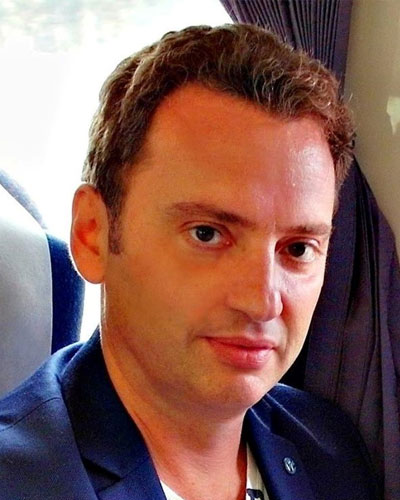
Professor, Utsunomiya University, Department of Agricultural Engineering, Japan
| 1989 | Ph.D. at University of Tsukuba in Japan: Environmental control in Livestock house |
|---|---|
| 1990 | Assistant Prof. at University of Tsukuba: Environmental control in Greenhouse |
| 1993 | Chief researcher at National Institution of Livestock Industry |
| 1998 | Visiting Professor at IOWA State University |
| 1999 | Lab Head: National Institution of Livestock Industry |
| 2013 | Professor at Utsunomiya University |
| 2016-2017 | President at The Society of Agricultural Structure, Japan |
| 2018-2021 | Vice President at Japan Association of International Commission of Agricultural and Biosystems Engineering |
Research topic:
Aerosol and airborne pathogen in Livestock House, Environmental assessment of Livestock production with LCA, Odor diffusion from Livestock Farm, Smart Livestock production, AI model for predicting hoof disease
In the past several years or so, information and Communication Technology (ICT) such as Internet of Things (IoT), robots and artificial intelligence (AI) have been introduced in livestock production to solve issues those are lack of workers, prevention of heat load, control of epidemic and so on. Livestock productions introduced these technologies are called precision livestock farming, smart livestock production or digital livestock production or digital transformation (DX) of livestock production. On the other hand, a production system that is used for the circulation of matter and saves fossil fuel to reduce GHG is required represented by circular economy or bio economy in order to sustainable production. As to be persisted livestock management it is necessary to economical point and the view point of environmental loading. Digital livestock production contributes to those two points. Animal health monitoring technologies prolong animal life. Robots and automation technologies save labor and resource. Precision livestock farming including feed management and waste management relate to not only saving resource and energy but also reducing environmental load. In the view points of DX, it is necessary of objective system boundary to involve not only producers but also consumers. In the presence big data is collected by many sensors and internet. The use of big data is an important key point and for that, it needs to be cooperated many databases.
Keywords: Digital livestock production, ICT, sustainable production
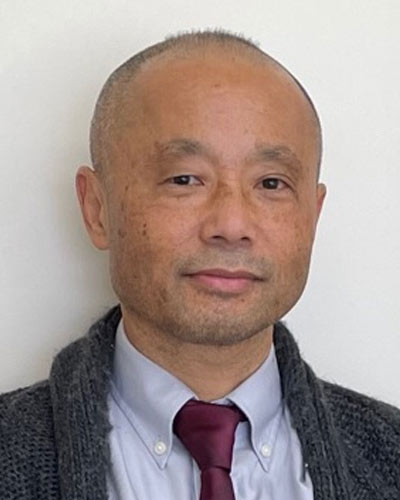
Executive Engineering Officer of YANMAR Agribusiness Co., Ltd, Japan
| December, 2018 | Executive Engineering Officer (to present) |
|---|---|
| April, 2018 | Manager of Advance Development Department of Yanmar Agribusiness Corporation (to present) |
| July, 2017 | Manager of System Integration Development Department and Tractor Product Manager |
| January, 2015 | Tractor Product Manager |
| April,2012 | Manager of Product Development Department 1 (Tractor Development Department) |
| September, 2008 | Ph.D. gricultural Engineering, Kyoto University |
| January, 2007 | Osaka Excellent Invention Award |
| April, 2003 | Mori Technical Award of Japanese Society of Agricultural Machinery |
| December, 2002 | Tractor Development Department. Engaged in domestic and international tractor development about 14 years |
| July, 1986 | Combine harvester Developmrnt Department. Engaged developing combine harvesters about 16 years. |
| April, 1986 | Joined Yanmar |
Japan's agricultural machinery has developed since the 1950s, when the liberation of agricultural land progressed. The prime mover was used for plowing work, and it spread explosively and reduced heavy labor. After that, harvesters, threshing machines, and rice transplanters appeared one after another, and the working hours were shortened. Next, in order to improve productivity, refinement of agricultural work itself, double speed turning, continuously variable transmission, speeding up of work speed, etc. have progressed, and comfortable cabins have been installed. By the time 2000 was exceeded, the operation of agricultural machinery in the field was mainly steering, which required the most skill of skilled workers.
On the other hand, in Japan, with the progress of agricultural machinery, the outflow of population to urban areas is accelerating, the population of farmers is declining sharply, the population is aging, and the number of skilled workers is decreasing remarkably. Under these circumstances, Yanmar promoted the development of automatic steering technology and launched a short-range monitoring type unmanned tractor on the market from October 2018.
Yanmar collectively refers to agricultural machinery, including unmanned tractors, driven by external data as the SMART PILOT® series. It mentions the basics of the technology, its ability as a product, its functions, safety, operation, future vision, and its potential for dissemination both domestically and internationally.
Keywords: Steering control, Obstacle detection, Tablet operation, Field data linkage, Sustainability
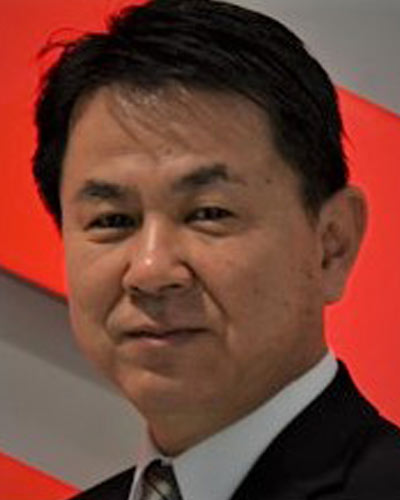
Indian Institute of Technology Kharagpur, India
The Asia-Pacific Region has witnessed significant advancement in agricultural mechanization over the past five decades. Several Asian countries have largely replaced draft animals as sources of farm power with tractors (either four-wheeled or two-wheeled or a combination of both depending on the agricultural system), and diesel and/or electrical motors for powering irrigation pump-sets as well as equipment for harvesting, post-harvest handling and processing. A shift from traditional labor-intensive production and post-harvest operations to mechanized labor-saving technologies is taking place across Asian agriculture in response to rising labor scarcity, greying agricultural populations, increasing labor costs and the increasing feminization of agriculture due to the propensity of more men than women migrating to urban. However, the rate, as well as the level of mechanization, are not uniform across the countries. This disparity is also evident in realizing some "“ill-effects" of improper/inappropriate mechanization.
Inappropriate agricultural machinery, equipment and implements, coupled with their improper utilization lead to increased pressure on fragile natural resources by accelerating soil erosion and compaction, promoting the over-use of chemical inputs and result in unfavorable economic and environmental footprints.
This paper provides an overview of the agricultural sector in Asia and the Pacific region focusing on key trends that are likely to influence developments in the sector, especially those that are relevant to the use of agricultural mechanization inputs. Substantiated with energy input-output analysis of selected agricultural systems of the region, this paper eventually highlights the ‘hot spots’ of agricultural mechanization from the viewpoint of sustainability.
Keywords: Mechanization level, Energy input-output analysis, Energy use efficiency, GHG emission, Sustainability
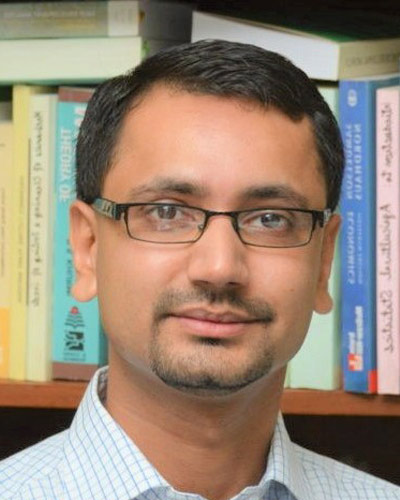
Professor, The University of Tokyo, Japan
| B.S. 1982 | Faculty of Agriculture, Mie University |
|---|---|
| M.S. 1984 | Division of Agriculture, The University of Tokyo |
| Ph.D. 1988 | Division of Agriculture, The University of Tokyo |
| 1986 - | Assistant Professor, Faculty of Agriculture, The University of Tokyo |
|---|---|
| 1991 - | Lecturer, Faculty of Agriculture, Utsunomiya University |
| 1994 - | Associate Professor, Faculty of Agriculture, Utsunomiya University |
| 1997 - | Associate Professor, Graduate School of Agricultural and Life Sciences, The University of Tokyo |
| 2010 - | Professor, Graduate School of Agricultural and Life Sciences, The University of Tokyo |
Japan aims to reduce greenhouse gas emissions by 46% from the fiscal 2013 level by 2030 and to achieve carbon neutrality by 2050, and renewable energy is expected to be a major energy source. With the implementation of the feed-in tariff (FIT) system, the amount of electricity generated from renewable energy sources has increased rapidly, but there are limits to the introduction of solar and wind power generation, which are subject to large fluctuations. Biomass power generation is expected to be a base power source, but in some areas, it is difficult to say that it is progressing as initially expected. Since biomass power generation requires a continuous supply of fuel, it is linked to industries such as forestry, agriculture, livestock, and waste recycling, and can contribute to employment promotion and local industry. Therefore, there is an expectation that, the biomass generated in the region will be used to contribute to the economic development of the region, but currently there is a heavy reliance on imported biomass. In terms of energy security, the use of domestically produced biomass should be promoted in the future. This presentation will discuss the current status and problems of biomass power generation in Japan.
Keywords: Biomass, Energy, GHG
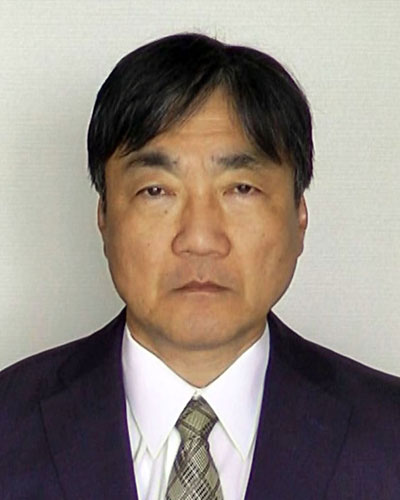
Professor, Chungnam National University, Korea
Considering Greenhouse gas (GHG) emission, the experts are interested to develop the electric or hydrogen tractor. This study was focused to illustrate the status of eco-friendly tractor in Korea. It was observed that the electric tractor is developed but stopped commercialized due price and user demand. Korea also aimed to develop and commercialized the medium electric tractor and 110 kW hydrogen tractor in 2025. It is expected that the hydrogen tractor would be new era of agricultural tractor that could be a zero-emission tractor for agriculture sector.

Professor, Bogor Agricultural University, Indonesia
Modernization and industrialization move faster and imply for changing the needs and challenges in all lines of human life. On the other hand, these developments also challenge or even 'force' us to change the work systems, tools and methodologies that eventually need for interventions to produce a match and suitability between the work and worker characteristics. The agricultural sector is no exception, which is still the largest provider of employment in many developing countries in the world, including Indonesia. Characteristics of agricultural work system in Indonesia have very broad profile and spectrum; ranging from very simple-traditional to modern-intensive, from rain-fed to technically-irrigated field, from mix-farming of vegetable crops to monoculture industrial crops, from subsistence small-scale farming to large-scale commercial plantation, from plain lowland to rugged mountainous fields. However, manual work that relies on human power is still very dominant in most cases. Therefore problems of productivity, work safety and welfare are important issues in which requires ergonomic intervention in order to produce the best formulation in the design of sustainable work systems. Research in the field of ergonomics is still relatively little carried out in Indonesia, especially those related to agriculture. On this occasion, we briefly present an overview of some research that we have been carrying out as an intervention effort to improve productivity and safety in agricultural work systems in Indonesia.
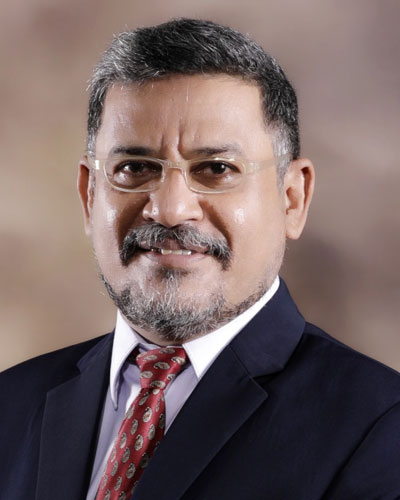
Professor, Ibaraki University, Japan
| 1982- 1986 | Undergraduate Student of Faculty of Agriculture, Ibaraki University |
|---|---|
| 1996 | Received Ph. D. at Tsukuba University |
| 1987-1998 | Assistant professor, Faculty of Agriculture, Ibaraki University |
| 1998-2007 | Associate professor of above Faculty |
| 1999-2000 | Visiting professor, Department of Soil Science, North Carolina State University |
| 2007-2013 | Associate professor, Center for field science research & education, Ibaraki University |
| 2013-now | Professor, College of Agriculture, Ibaraki University |
| 2017- | Director of Field Science Center for Research & Education, Ibaraki University |
| 2018-2021 | Director of Center for International Field Agriculture Research & Education, Ibaraki University now Professor, College of Agriculture, Ibaraki University |
Farming system research, sustainable soil management, cover crop management, organic farming and agro-ecology
Masakazu Komatsuzaki is a full professor of Research faculty of Agriculture, Ibaraki University. He obtained his PhD from Tsukuba University in 1996. He worked at Department of Soil Science, North Carolina State University in 1999 as a visiting researcher. Since 2000, he has supervised 14 PhD students. He has worked for various research projects related to soil and water conservation in agroecosystems including cover crop management, no tillage system and organic farming in Asian countries.
Young Researcher’s Award in Farm Work Research (1997)
Academic Award in Farm Work Research (2007)
Education Award in Japanese University Farm Association (2015)
Research Fellow Award in Japanese Agricultural Engineering (2016)
Academic Award in Japanese Agricultural Engineering (2017)
The area of organic farming and its market is incredibly increasing in recent decades, however, there are various ways of organic farming practices. As increasing the interest in organic farming, the discussions regarding how organic farming can contribute to developing sustainable agriculture are widening. Organic agriculture, however, often required intensive labor farming, and this is one of the limitations. Recently, Smart Agriculture is an emerging concept that refers to managing farms using technologies like IoT, robotics, drones, and AI to increase the quantity and quality of products while optimizing the human labor required by production. This paper discussed the Ergonomics aspect of organic farming and smart agriculture. To develop smart agriculture for organic farming that intends to mitigate climate changes through farming practices, no-tillage cover crop, and robotics adoptions will be effective ways to develop the new organic farming system. Autonomous driving control tractors using GNSS also contribute to improving the weeding performance for organic rice production. On-body personal assist suits affect heart rate, muscles, trunk movement, and user acceptance that may contribute to developing the low labor-intensive organic agriculture. We briefly present an overview of some research that we have been carrying out as an intervention effort to improve productivity and reduce the labor in organic agriculture.
Keywords: Ergonomics, Organic farming, Smart agriculture
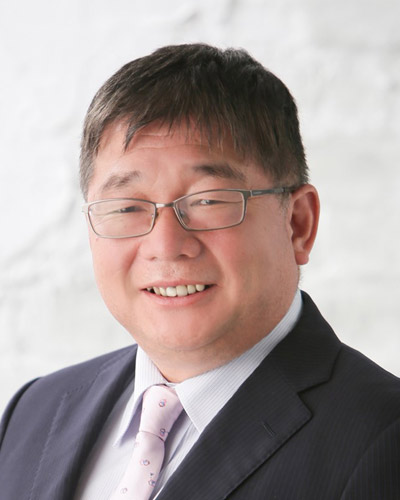
Manager, Public Relations Department, Satake Corporation, Japan
| 2021 - present | Manager, Public Relations Section, Satake Corporation |
|---|---|
| 2016 - 2021 | Assistant Manager, Public Relations Office, Satake Corporation |
| 2014 - 2016 | General Manager, Satake Honolulu, Inc. |
| 2009 - 2014 | Department Manager, Customer Service Department, Satake USA, Inc. |
| 2005 | Joined Satake Group |
In order to respond to the increasingly severe environment surrounding rice milling industry, such as the shortage of human resources at rice milling factories, operational difficulties due to shortened working hours, and the sophistication of the product quality required for ready-made meals and restaurants, Satake has developed a next-generation rice processing plant, MILSTA, based on the development concept of "integration and automation," "quality assurance and risk diversification," and "contribution to customer profits." The presentation will be based on following key features of MILSTA; Just-in-time production, 24/7 operation, Utilization of IoT, Improvement and stability of milled rice quality, and Rice-friendly processing.
Keywords: Rice milling technology, MILSTA, LLRP, Rinse free rice
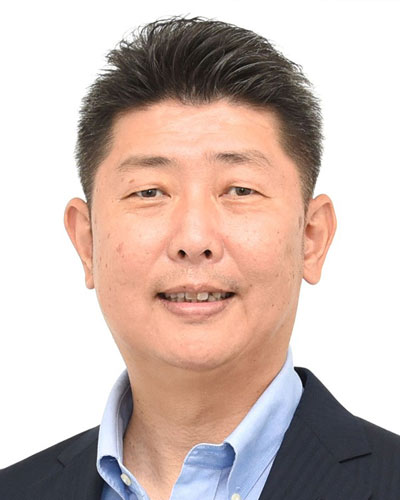
Professor, LeLeibniz Institute for Agricultural Engineering and Bioeconomy (ATB), Germany
Oliver Schlüter received his Ph.D. in food technology at the Berlin University of Technology. Since 2003, he is a senior scientist at the Leibniz Institute for Agricultural Engineering and Bioeconomy (ATB).
Dr. Schlüter is head of the ATB working group on "Alternative bioresources and advanced food processing", he is vice-head of the Department of Horticultural Engineering and has been the coordinator of the research program on "Quality and safety of food and feed” (2010 to 2022). His research work focuses on emerging technologies in primary food production (e. g. fruits, vegetables, herbs, spices, grains, macro algae, edible insects), gentle food processing (high pressure, pulsed electric fields, ozone, plasma etc.), optimisation and innovation of processing steps along the food chain of perishables including quality and safety monitoring.
Dr. Schlüter received his habilitation in food technology 2019 at the Dresden University of Technology. He is adjunct professor at the University of Bologna and was a lecturer at the University of Sao Paulo in Brazil, at the University of Copenhagen, at the Berlin University of Technology, and others. He is supervising PhD students, Master students and Bachelor students. Dr. Schlüter is author of about 200 publications and presented more than 350 papers at conferences. Among others, Dr. Schlüter is the Chair of the Technical Board of CIGR Section VI: Bioprocesses, Chair of EFFoST Standing Committee on Careers Development & Education, German representative of IFA (ISEKI Food Association) and GHI (Global Harmonization Initiative) and was member-at-large of the IFT Food Engineering Division. He is member of the editorial board of Innovative Food Science and Emerging Technologies, Journal of Insects as Food and Feed and Co-Editor of the book entitled "Cold Plasma in Food and Agriculture", Academic Press, Elsevier.
The talk addresses complex scientific questions in the spectrum between primary production and processing of food and feed by means of innovative and interdisciplinary approaches. Our work explores the design of sustainable processes that have a targeted positive effect on the food biosystems involved. We implement new monitoring techniques considering the nutrient profiles along the postharvest chain, which is used for the development of advanced and "smart" process settings and technologies. Obtained results are expected to lead to tailor-made sustainable production processes, assuring the food and feed supply for humans and animals with desired quantity, quality and safety while increasing resource and process efficiency. The potential of various concepts and technologies to replace/reduce i.e. conventional thermal techniques to develop environmentally friendly processes will be discussed. Some examples will be presented through case studies.
Keywords: Alternative bioresources, advanced postharvest processing, nonthermal technologies, resilient food systems.
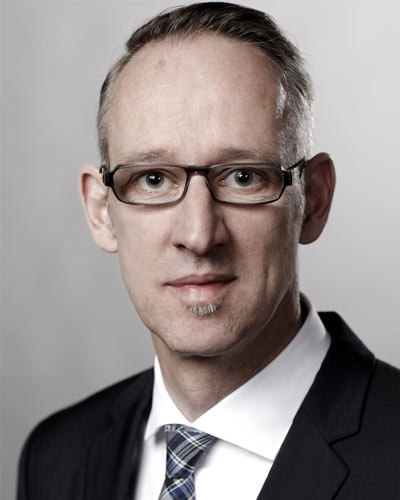
Vice President & General Manager, AG EMEA & APAC, Topcon Agriculture, Japan
Over the past years, we have seen a step-by-step evolution within the agriculture industry to bring further productivity for the farmers. Agriculture Re-Evolution, led by technology and data, is headed towards vehicle autonomy where the value is focused on quantity and quality of data, to improve the efficiency in the vehicle architecture.
In particular, there are two basic streams of evolution in vehicle architecture. First is a hydraulic or mechanical stream where more and more automotive elements are implemented in the vehicle itself. The second is the data stream that collects information from the vehicle and its surroundings, where data analytics is used to perform better farming tasks. Here, the cloud infrastructure becomes the brain and intelligence of the vehicle behavior. When these two streams meet together, they create an autonomous solution.
However, vehicle autonomy by itself does not address the problem without the appropriate tasks and principal needed for the farmer. Topcon, with its philosophy to contribute to enrichment of human lives by solving societal challenges in agriculture (along with healthcare and infrastructure), ensures that the integrated and connected precision farming solutions meet each regional farmer’s needs to bring productivity and efficiency to every phase of farming. The objective of autonomy is to help human beings fix the environmental needs that are challenging for the human lives.
Digitalization and vehicle autonomy through sustainable solutions are what is driving the evolution of agriculture.
Keywords: Autonomy, Sustainability, Digitalization, Productivity

The University of Tokyo, Japan
Dr. Hirafuji Joined the Field Phenomics Research Laboratory of the University of Tokyo as a project professor in 2017. His most recent position was a director at National Agriculture and Food Research Organization (NARO). Prior to the NARO, he served in government institutions (the Ministry of Agriculture, Forestry and Fisheries, and the Agriculture, Forestry and Fisheries Research Council).
He has investigated various studies such as computational modeling for biological/agricultural systems, neural networks, space agriculture and sensor network. He is the inventor of Field Server, which is a kind of IoT (sensor network to monitor environment and plants) in fields. He is interested in also Quantum Evolution (quantum physics for biology) as fundamental studies in living systems. Recently, he investigated IoT, big data and AI in JST CREST project (Knowledge Discovery by Constructing AgriBigData) as PI for 2015-2021. After the project, he has been investigating CPS with Metaverse in JST AIP Acceleration Research (Studies of CPS platform to raise big-data-driven AI agriculture) as PI.
Project Professor
International Field Phenomics Research laboratory
Institute for Sustainable Agro-ecosystem Services
Graduate School of Agricultural and Life Sciences
The University of Tokyo
CEO/Funder
Dream Science Holdings Inc
http://park.itc.u-tokyo.ac.jp/Field-Phenomics/
http://www.researchgate.net/profile/Masayuji_Hirafuj
http://dream-science.com/
| 2017 - present | Project Professor, The University of Tokyo |
|---|---|
| 2011 - 2017 | Director, Hokkaido Agricultural Research Center, NARO (National Agriculture and Food Research Organization) |
| 2005 - 2017 | Professor, Doctoral Program in Advanced Agricultural Technology & Science, Graduate School of Life & Environmental Sciences, University of Tsukuba |
| 1996 - 2011 | Head, Field Monitoring Team, National Agricultural Research Center, NARO (National Agriculture and Food Research Organization) |
| 1994 - 1996 | Officer (Research Organizer), MAFF (Ministry of Agriculture, Fisheries and Forestry) |
| 1984 - 1994 | Research scientist, National Agricultural Research Center, MAFF (Ministry of Agriculture, Fisheries and Forestry) |
The ultimate purpose of agriculture is to produce enough foods flexibly solving problems such as changing environments, new diseases and new demands. Artificial Intelligence (AI) can contribute it by developing new methods for breeding and data-driven agriculture. AI will be AGI (Artificial Genera Intelligence) by introducing quantum computing. Anyway, AI and AGI need sufficient training data for machine learning. So, it is strategically important to increase the amount of useful big data. A key technology to increase the big data exponentially is self-reproduction. Also, self-reproduction is needed for self-evolution of AGI. As a strategy to achieve self-reproduction, we have been developing methods to collect agricultural big data automatically with discovering new knowledge, which includes new sensing methods for IoT and drones in fields. However, AI cannot evolve automatically for lack of functions such as consciousness, so we are developing XR (VR/AR/MR) apps for collaboration with experts, users and AI in metaverse. Currently, we face with a new problem, that is, permanent storage of the big data. Moreover, it is not easy to transfer just 1 TB of data in the field to cloud storage. We are trying to solve it by field distributed computing as a function of Web3.
Keywords: Sensing, IoT, Big Data, AI, Web3

The College of Engineering, South China Agricultural University, China
Prof. Xiwen LUO, from South China Agricultural University, is an academician of Chinese Academy of Engineering (CAE). He is also an honorary president of Chinese Society of Agricultural Engineering (CSAE) and an honorary president of Chinese Society for Agricultural Machinery (CSAM). He has been engaged in teaching, research and practice of agricultural engineering more than 50 years. His main research fields are: technology and equipment of precision rice hill-drop, agricultural machinery navigation and auto operation, technology and equipment of farmland precision leveling and agricultural aviation technology.
Prof. Xiwen LUO was elected as the fellow of the International Academy of Agricultural and Biosystems Engineering in 2020
Smart agriculture can improve the labor productivity, land output rate and resource utilization rate in agricultural production, it is the development direction of the modern agriculture.
Unmanned farm is an important way to realize the smart agriculture, and to solve the problem of “who will farm and how to farm” in the future.
South China Agricultural University developed an unmanned rice farm in 2020. This unmanned farm has broken through in four key technologies, including: (1) Digital information perception; (2) Intelligent decision making; (3) Precision operation; and (4) Intelligent management. And it has five functions, including: (1) All the production links, including tillage, planting, field management and harvesting, are unmanned; (2) The unmanned machineries can automatically transfer between garage and field; (3) The machineries can automatically avoid obstacle and stop by emergency-triggered; (4) The whole producing processes are real-time monitored; and (5) Decision-making and precision operations are all intelligence-based and unmanned.
The early season rice in the unmanned rice farm in 2021 showed the yield of 9.9 t/ha, the average yield of this rice variety was 7.5 t/ha in this region.
The unmanned farm technologies have been popularized in 13 provinces in China. The crops included rice, wheat, maize and peanut. The practical experience of unmanned farm showed the excellent potential in agricultural production.
Keywords: smart farm, unmanned farm, smart agricultural machinery, information technology, precision operation, automatic navigation.

University of Florida, USA
Artificial intelligence (AI) is playing a significant role in crop production in the U.S. This seminar presents definitions of specialty crops, and AI applications for specialty crop production in Florida with recent research developments. Example research projects include the detection of mature and immature green oranges using color and thermal imaging, autonomous citrus yield mapping system, postharvest fruit inspection using AI, strawberry flower and fruit detection for yield estimation, two-spotted spider mites detection, strawberry plant wetness detection, and the AgroView cloud-based application. The groundbreaking AI Initiative at the University of Florida is also introduced. The goals of the Initiative are to complete supercomputing infrastructure, develop technology-driven research, embed AI and data science into the curriculum, and build an AI-enabled future workforce. Various university-wide efforts will be introduced related to the AI Initiative.
Keywords: Curriculum, deep learning, mites, NVIDIA, strawberry, yield estimation.
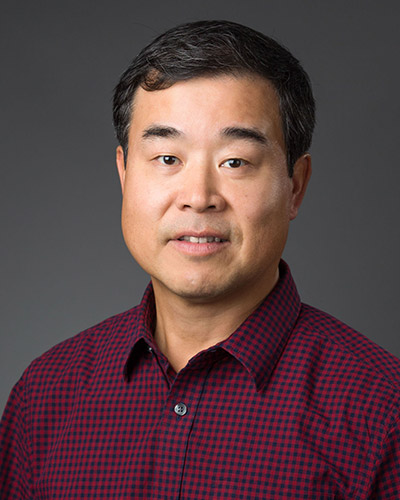
CIGR Fellow, Professor Emeritus of Technische Universität München, Germany
DEducation in farming with experience on different farms in Germany and abroad
Ing.-agr. at Ingenieurschule für Landbau in Nürtingen 1967
Diploma in Agriculture at the Technical University of Munich (TUM) 1971
Dr. in Agriculture with the thesis: "Work Science Analyses in Cattle Systems" 1975 at TUM
Habilitation with the thesis: "System Analysis in Dairying" 1989 at TUM
Scientific research in the use of computers and electronics in Dairying at TUM with the main focus on Precision Lifestock Farming (animal identification, milk meters, concentrate dispensers, automatic data acquisition and data modeling) 1975 to 1984
Scientific research in the use of electronics in crop production engineering at TUM with the main focus om Precision Farming (first world wide use of GPS in combine harvesters and in forage harvesting equipment, Initiation and establishment of standards for mobile electronic communication systems in DIN (LBS) and in ISO (ISOBUS), Development and test of virtual land consolidation systems, Development and test of electric drives in self propelled harvesting technologies) from up to 1986
Assistance Professor in "Agricultural Mechanization" October 1978 at TUM
Associate Professor in "Agricultural Mechanization" February 1992 at TUM
Associate Professor in "Crop Production Engineering" at the Institut für Landtechnik TUM in Weihenstephan in October 1996
Provisional management as Full Professor in "Agricultural Mechanization" at the Institute of Land Use Systems TUM in Weihenstephan in February 2003
Retirement in 2007
Since 2007 establishment of the "AgTecCollection in mediaTUM", an archiving and retrieval system of more than 58,000 pictures and more than 2000 scriptures "Agricultural Engineering"
A total of 675 publications including
- 14 books/journal volumes edited
- 522 scientific publications (161 in English language, 53 reviewed, 89 invited)
- 139 publications with practical relationship
Chairman of DLG-Working group:
Agricultural labor management and process control
Chairman of the German standardization committee "Agricultural BUS system (LBS) by DIN 9684"
Initiator and German Representative ISO 11783 (ISOBUS)
Chairman of SIG 16 in EurAgEng: Electronic Farm Communication
Chairman of VDI-MEG program committee of the international conference "Agricultural Engineering (Landtechnik)", Initiator to add the conference to the AGRITECHNIKA Hannover
Full member of "Club of Bologna"
Member of Section III of CIGR
| 1983 | Thurn und Taxis Promotion Award Agriculture |
|---|---|
| 1989 | Max-Eyth Remembrance Medal of VDI-MEG |
| 1996 | Order of Merit of the Federal Republic of Germany |
| 2001 | German Environmental Award of DBU (German Federal Environment Foundation) |
| 2007 | Precision Farming Award 6ECPA Skiathos (Grecce) |
| 2010 | Recognition Award EurAgEng |
| 2011 | CIGR Fellow |
| 2016 | Founding Member of CIGR Academy |
| 2018 | TUM Emeritus of Excellence |
In today's digital world, yesterday's analog knowledge is often ignored or given far too little attention. Original research approaches thus remain unconsidered and inevitably lead to repetitions without any scientific gain in knowledge. It is therefore essential to make analog knowledge available for digital use.
For the project "AgTecCollection in mediaTUM®", systematic approaches to the digitization of existing knowledge repositories in the form of images, documents, films/videos and research data will be demonstrated.
These will be complemented with the parallel development of a media and publications repository at the Technical University of Munich.
This is followed by a description of the indexing of digital objects via metadata and their publication in the knowledge base. These initially focused on digitized images from more than 50,000 slides, predominantly in the form of photographs. It was accompanied by the digitization of all existing student theses, doctoral and post-doctoral theses and supplemented by publication series and research reports. And finally, all of the more than 15,000 established technical drawings were indexed and published in the form of overviews, schematic drawings, diagrams and mappings. Initial films/videos and research data are currently supplementing the overall collection.
Parallel to these comprehensive and time-consuming tasks, a continuous analysis of the use of the knowledge repository was carried out from the very beginning via access and download analyses by object and by country. After only a short time, it was possible to demonstrate the great worldwide interest in the digital collection from well over 120 countries.
Keywords: Agricultural Engineering, Repository, Digitalization

Director of National Engineering Research Center for Information Technology in Agriculture, China
Dr. Chunjiang Zhao, Director & Chief Scientist of China National Engineering Research Center for Information Technology in Agriculture (NERCITA), Academician of Chinese Academy of Engineering, honorary president of Chinese Society of Agricultural Engineering(CSAE) vice-president of Chinese Society for Agricultural Machinery (CSAM). member of the National New Generation Artificial Intelligence Strategy Advisory Committee. He is engaged in the research of agricultural intelligent systems and smart farming, and has made a number of innovations in agricultural sensors and internet of things, big data technology, agricultural intelligent equipment, etc., published more than 300 papers and 5 books. He has Won 5 awards of National Science and Technology, and the World Summit Award of World Summit on Information Society in 2003.
In order to overcome the challenges facing agriculture to ensure national food security, the development of smart agriculture has been identified as China's future modern agricultural development strategy. The mission of smart agriculture is continuously to improve agricultural productivity and maintain sustainability by application of new generation information technology and intelligent industry equipment. The goal of smart agriculture is to complete digital transformation by 2035 and fully realize intelligent transformation by 2050.
The smart agriculture development roadmap is technology & production innovation driven by application scenarios, demonstration verification, application popularization, and at last forming digital economy industry. The key points of smart agricultural technology research and development are intelligent sensing (sensor, RS, IOT), intelligent analysis and decision making (big-data, AI), intelligent implementation (UAV, robot, auto-tractor, unmanned farming system) and networking service (web, cloud).
To develop smart agriculture solutions for small-scale farming especially important for China. Strengthen the construction of rural information infrastructure (5G, IoT, BeiDou-GNSS), farmland consolidation coupled with the development of appropriate systems for machinery use, trusteeship services and government assistance policy are all necessary for the promotion of smart agriculture.
Keywords: food safety, small scale farming, rural information infrastructure, intelligent information technology, intelligent equipment, unmanned farming system
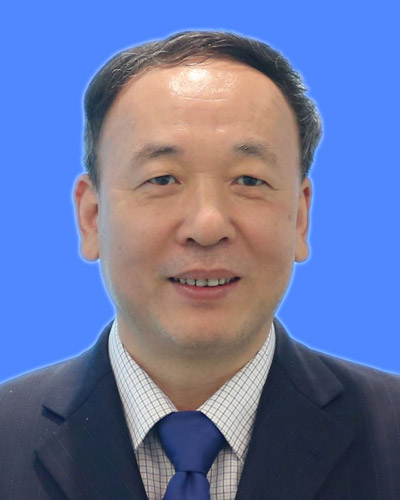
Professor, Technische Universität München, Germany
Name: Heinz Bernhardt
Day of birth: 15. February 1974
Technical University of Munich
Agricultural System Engineering
Dürnast 10
85354 Freising
E-Mail: heinz.bernhardt@tum.de
Tel: +49 8161 713086
| Since 9/2015 | Guest lectureship: Universität für Bodenkultur Wien/Austria, Tokyo University of Agriculture and Technology Tokyo/Japan, Hokkaido University Sapporo/Japan |
|---|---|
| Since 10/2008 | Full professor for Agricultural System Engineering at - Technical University of Munich |
| 4/2006 - 9/2008 | Assistant Professor/Lecturer for Agricultural Engineering at the Justus-Liebig University Giessen |
| 4/2005 - 9/2005 | Lectureship for Agricultural Engineering at the Christian-Albrecht-University Kiel |
| 10/2002 - 3/2006 | Postdoctoral research fellow at the Institute for Agricultural Engineering, Justus-Liebig University Giessen |
| 6/1998 - 7/2002 | RecognitionScientific assistant at the Institute for Agricultural Engineering, Justus-Liebig University Giessen |
| 10/1997 - 5/1998 | Research project "Logistic of sugar beets" |
| 4/2006 | Associate professor at the Justus-Liebig-University Giessen venia legendi for Agricultural Engineering |
|---|---|
| 6/2005 - 2/2006 | Habilitation at the Justus Liebig University Giessen. Subject: "Verfahrenstechnische Konsequenzen zur Bewältigung ordnungspolitischer Vorgaben und Handelsnormen bei der Getreideproduktion unter Einbeziehung der Mykotoxinproblematik" |
| 6/1998 - 3/2002 | Doctorate at the Institute for Agricultural Engineering at the Justus-Liebig University Giessen |
| 9/1993 - 9/1997 | Study of Agricultural Sciences at the Justus-Liebig-University Giessen |
Robotics has long been a dream in agriculture. Based on the developments currently available on the European market, the status in agriculture and livestock farming will be presented. It is evident that robots for milking, feeding and cleaning are widely used in cattle farming. In arable farming, they are currently mostly used for plant protection and there are initial development approaches that also take over soil cultivation and sowing. A major problem, especially in arable farming, is still the legal situation regarding liability for damage caused by autonomous driving in the field. This is slowing down development here.
Keywords: smart farming, legal framework, labour shortage
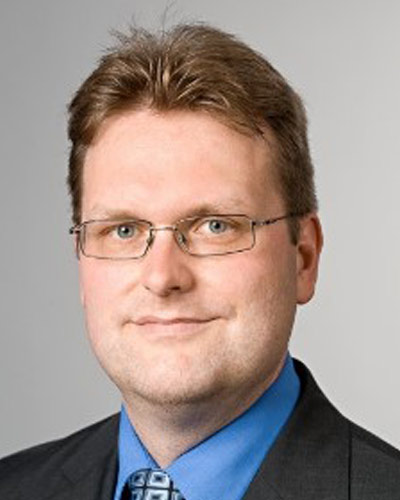
Professor, Center for Precision and Automated Agricultural Systems, Washington State University, USA
Zhejiang Agri. University Hangzhou, China Mechanical Engineering BS, 1982
University of Idaho Moscow, ID Agricultural Engineering MS, 1988
University of Illinois at U-C Urbana, IL Agricultural Engineering PhD, 1991
University of Illinois at U-C Urbana, IL Agricultural Engineering 01/92-03/94
| 2009 - Date | Professor, Director, Center for Precision & Automated Agricultural Systems (CPAAS), Washington State University (WSU) |
|---|---|
| 1997 - 2009 | Assistant/Associate/Full Professor, Agricultural Engineering, University of Illinois at U-C |
| 1994 - 1997 | Sr. Research Engineer, Caterpillar, Inc., Peoria, IL |
| 1992 - 1994 | Postdoctoral Research Associate, Agricultural Engineering, University of Illinois at U-C |
Summary: 10 authored or edited technical books, 27 book chapters, 194 articles on peer-reviewed professional journals, 59 other peer-reviewed articles, and 12 US Patents. Selected examples:
Agricultural cybernetics is an emerging field of science that aims to purposively regulate and optimize agricultural production systems using a systematic approach. It applies a circular causality reasoning in searching for optimized actions for automatic implementation of field operations. Supported by state-of-the-art information, connectivity, and automation technologies, agriculture is evolving into a smart production era. Yet, agricultural systems have their own unique structures and regulatory mechanisms attributing to the nature of biological systems. Thus, they require transdisciplinary approaches to regulate the structures, constraints, and possibilities of such systems. As a study of the communication and control processes in biological systems with implementing machines, agricultural cybernetics adopts automatic control theory for analyzing the ability of crops, animals, humans, and machines to respond to or make adjustment based upon environmental inputs. Agricultural cybernetics is a needed tool for practicing smart agriculture.
Keywords: Agricultural systems, agricultural automation, implementing window, information and communication, purposive regulatory, circular causality
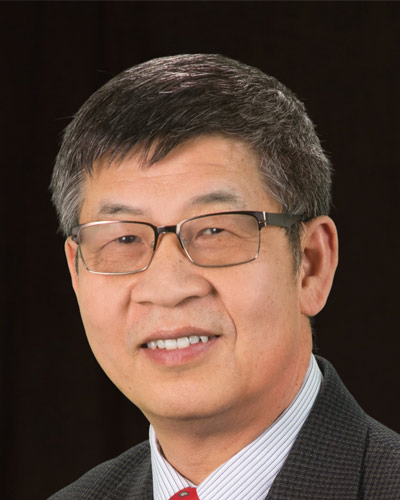
Guest editor of each special issue will select some high-quality papers presented at the XX CIGR World Congress 2022, and invite the author(s) for a full-length paper contribution. The submitted paper will be peer-reviewed then published in the affiliated journals below.
Computers and Electronics in Agriculture (COMPAG)
Guest editor-in-chief: Dr. Liangliang Yang
Environmental Control in Biology (ECB)
Guest editor-in-chief: Dr. Eiji Goto
Agricultural Mechanization in Asia, Africa and Latin America (AMA)
Guest editor-in-chief: Dr. Yoshinori Kishida
Engineering in Agriculture, Environment and Food (EAEF)
Guest editor-in-chief: Dr. Michihisa Iida